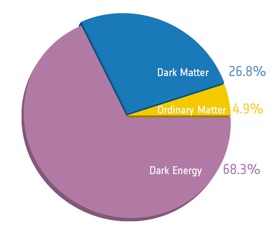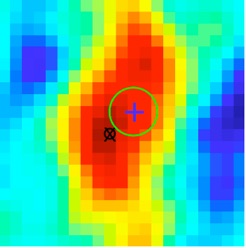

Dark Energy
Galaxy Clusters
Credit: Planck/ESA
In 1998, we discovered with observations of supernovae that the expansion of the Universe was accelerating with time, instead of decelerating as one would expect due to gravity. The source of this acceleration, which we call Dark Energy is one of the biggest mysteries in cosmology today.


Galaxy clusters are the most massive collapsed objects in the Universe today, with masses from a 100 to a 1000 or more times the mass of the Milky Way. As they fall on the extreme tail of the mass distribution, the number counts of galaxy clusters are exquisitely sensitive to anything that affects structure growth in the Universe -- such as Dark Energy.
In the Sunyaev-Zel’dovich (SZ) effect, the (cold) photons of the cosmic microwave background (CMB) inverse Compton scatter off the very hot electrons of the intracluster medium. This leaves a deficit of CMB photons below 217 GHz. The figures to the left show one of the first four galaxy clusters discovered via the SZ effect (Staniszewski et al., ApJ 2009). The top panel is an optical image of the cluster, SPT-CL 0517-5430; the bottom panel is the SZ signal seen by the South Pole Telescope.
The SZ effect is a superb tool for finding massive clusters, especially at high redshifts, since unlike optical or X-ray signals, the SZ signal doesn’t dim with redshift. The SZ flux is also closely tied to the overall cluster mass, making SZ surveys a great way to create mass-limited samples of galaxy clusters.